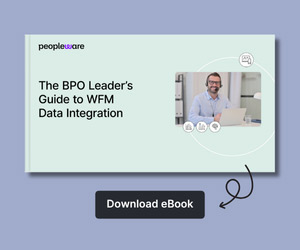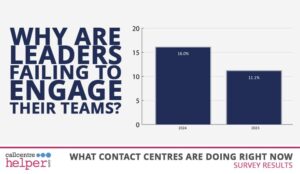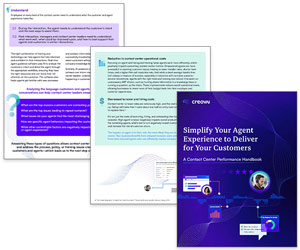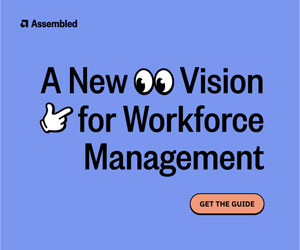Carolyn Blunt looks at the key areas of customer service even some of the big-brand contact centres are getting wrong.
If you are a smaller contact centre it is quite normal to sigh wistfully at the bigger centres and wish you had their budgets for technology and resources.
But here are 5 shocking things I have noticed that even some big centres are not getting right! Anyone should be able to sort these 5 things out relatively easily and make a huge difference to the performance of their contact centre.
1. Getting advisors to use the knowledge management system
Make sure your advisors are using the knowledge management system. I mean really using it. Not just asking their friend or searching through email cascades. And are they contributing to creating new articles and highlighting improvements?

Make this part of your team meeting agenda. The knowledge management system is crucial for saving face when dealing with savvy customers, improving First Contact Resolution and generally providing a speedy and confident customer experience.
If you are not sure of your knowledge management capabilities, haul your tech supplier back in and have a conversation.
If you have no knowledge management to speak of then start a simple Sharepoint for now. There is nothing worse than eventually getting through to an advisor only to find out you know more than they do, simply because you have access to the website (which the advisor probably can’t see).
2. Keeping the IVR updated
Sort out your IVR! When is the last time you went through the options yourself to check it? Have you done a ‘mystery shop’ on yourself lately? Look at the options, the wording and the routing. Consider the music you are using and how long people are there for on average.
I recently went through a terrible menu system, there were no fewer than 9 options in the first instance, with each of those then having several more.
It should be no more than 3×3 and, although we want to encourage self-service, the tedious ‘go to our website at www….’ provokes fury in most cases.
The music you use should be non-offensive, mainstream or linked to your service. When Virgin Trains’ music was ‘Love Train’ I had to smile.
Also, play the full track, don’t keep switching in a loop of 3 shortened tracks. People think they are being connected when actually the track is just changing. Again. Arghhhh!!!
3. Making self-service easy for customers
Let’s talk about self-service for a moment. Customers like self-service. They don’t want to talk to you if they can help it, it’s not top of their wish list either.

So make it easy for them to search for FAQ answers on your website. Ensure that this information is accurate and up to date! I recently had the misfortune of being given completely wrong information on a self-service page which caused even more problems!
Test the content with your most knowledgeable advisors and consider if there may be some anomalies to any broad sweeping assertions made. Support good FAQs with Live Chat and Community Forums and you’re well on the way to reducing your call volumes and durations.
Also, provide links to solution videos that demo ‘how to’ do some of the most common queries where appropriate. Your root cause analysis of call volumes can help you here.
4. Getting workforce management right
Planning your resourcing of staff against your contact volumes is a skill. Invest in the training and development of your planner(s) and help them out by working to accurately plan (and where possible reduce!) shrinkage.
Build in time for breaks, holidays, training, resilience recovery (after especially traumatic calls if needed) and manage punctuality, use of wrap time and absenteeism fairly but firmly.
A slogan I like to use is ‘Absence Makes Your Friends Work Harder!’ Ensure that when you are recruiting people they understand the shift plans, any weekend or overtime shifts and the focus on punctuality. This should never come as a shock. Recruit for attitude, aptitude and energy, you can train the rest later.
Also, avoid using temporary contracts except for peak cover. ‘Temp to perm’ is not as attractive as a permanent post with a probation period. If you want to attract the best people instead of them applying to the centre down the road, make the job offers permanent if you possibly can.
5. Listening to calls and front-line teams
Yes, the big centres may have fancy speech analytics that do this for them, but you can still get a great sense of the issues eating away at your contact centre and organisational performance.
Making time to listen to call recordings is essential. Talking to your front-line teams is important. They may be unhappy about the contents of the vending machine or they may tell you that your competitor has a better promotion on right now. Both are equally important in keeping contact centre performance high. Even just the opportunity to put forward their gripes and ideas is helpful to morale and motivation.
Taking the time to speak to them as individuals and as teams is critical, and yet sometimes the bigger the call centre, the less this happens with senior people. I see them striding importantly through the call centre on their mobile phones, while the advisors (who would be sacked for having a phone on the floor) are ignored.

Carolyn Blunt
This can impact motivation, retention, and absence. As one manager said when she changed this behaviour and started taking time to smile, greet and praise her staff: “I saw the advisors grow a foot taller!” Powerful stuff; and best of all, it costs nothing.
With thanks to Carolyn Blunt, Managing Director of Real Results Training, a specialist provider of call centre courses.
Author: Megan Jones
Published On: 11th Nov 2015 - Last modified: 13th Jan 2025
Read more about - Hints and Tips, Carolyn Blunt, Editor's Picks, Employee Engagement, IVR Solutions, Knowledge Management, Self Service, Workforce Management (WFM)










































